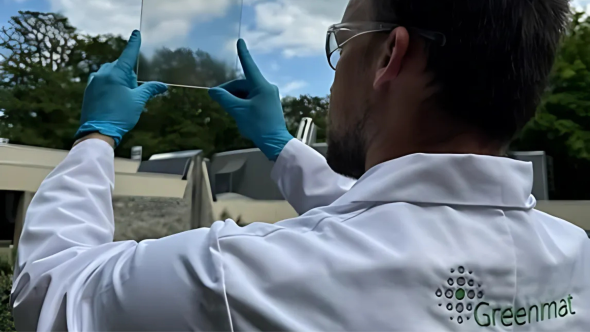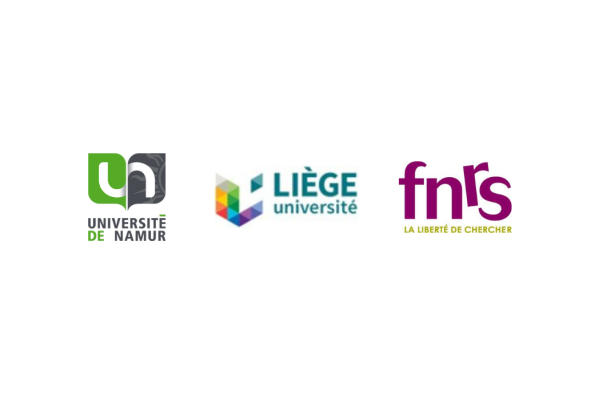Towards highly energy-efficient smart windows?
Researchers at ULiège and UNamur are developing a new electrochromic material: MoWOx.

Researchers at ULiège and UNamur are developing a new electrochromic material: MoWOx.

Scientists from the University of Liège (ULiège) and the University of Namur (UNamur) have developed an innovative electrochromic material capable of independently regulating light and heat in buildings. This breakthrough, based on a mixed molybdenum-tungsten oxide (MoWOx), paves the way for even more efficient and energy-saving smart windows.
Electrochromic windows are smart glazings capable of modulating their coloration, or more generally their state of transparency or opacity, when an external electric current is applied to it. This property makes it possible to control the intensity of solar radiation entering a building, without the need for blinds or curtains. This type of window is already manufactured industrially and used technologically in some buildings, but current products do not allow separate control of visible light (VIS) and near-infrared radiation (NIR), respectively linked to incident brightness and heat.
Researchers at ULiège and UNamur, thanks to support from the Fonds de la Recherche Scientifique (FNRS), have thus developed a new formulation of electrochromic material, entitled MoWOx, based on a "dual-band" functionality enabling selective and independent modulation of incoming light and heat fluxes.
Through this new formulation, the scientific teams have demonstrated the occurrence of an innovative optical mode, known as "warm", for the first time for this type of oxide. In this mode, the glass remains transparent to infrared radiation, allowing heat to pass through, while only partially filtering out visible light. This feature is particularly interesting for cold climates and winter periods, where maximizing solar heat gain while reducing solar glare can significantly reduce building energy consumption, particularly in terms of heating and artificial lighting.
.This "dual-band" functionality is based on the incorporation of nanostructured plasmonic compounds into the smart glass. A plasmonic material is one whose free electrons can oscillate collectively under the effect of light. It can then selectively absorb, reflect or scatter light, depending on its composition and structure. And it is precisely in the application of these plasmonic properties of MoWOx to the case of smart glazing that this innovation lies.
On this basis, the composition and morphology of plasmonic nanostructures directly influence the optical selectivity of filtering, enabling glazing to be tailored more precisely to users' needs.
.Future intelligent glazing incorporating these new components could ultimately revolutionize energy management in buildings. In a context where the energy transition remains a top priority, these innovative windows will help to achieve carbon neutrality targets and build near-zero energy buildings.
Florian Gillissen, researcher at the University of Liège and first author of the paper published in Advanced Optical Materials:"Thanks to this technology, we can adjust the transmission of light and heat through windows in real time, which represents a giant step forward for the energy optimization of buildings."
Professor Michaël Lobet, FNRS Qualified Researcher and first author of the paper published in ACS Applied Optical Materials: "Theoretical and numerical modeling was carried out at UNamur in Professor Luc Henrard's team, while material synthesis and characterization was carried out under the direction of Professor Rudi Cloots and Dr. Anthony Maho from the University of Liège. It is these synergies between theoretical modeling and fabrication that have enabled the characterization of these MoWOx materials."
Florian Gillissen, Michaël Lobet, Jennifer Dewalque, Pierre Colson, Gilles Spronck, Rachel Gouttebaron, Mathieu Duttine, Brandon Faceira, Aline Rougier, Luc Henrard, Rudi Cloots, Anthony Maho, Mixed Molybdenum-Tungsten Oxide as Dual-Band, VIS-NIR Selective Electrochromic Material, Advanced Optical Materials
https://doi.org/10.1002/adom.202401995
Michaël Lobet, Florian Gillissen, Nicolas De Moor, Jennifer Dewalque, Pierre Colson, Rudi Cloots, Anthony Maho, Luc Henrard, Plasmonic Properties of Doped Metal Oxides Investigated through the Kubelka-Munk Formalism, ACS Applied Optical Materials
https://doi.org/10.1021/acsaom.4c00432
Cette étude a été menée dans le cadre du projet PLASMON_EC, financé par le FNRS, en collaboration entre le laboratoire GREEnMat de l'Université de Liège et l'Institut de la matière structurée (NISM) de l'Université de Namur, en connexion étroite avec des chercheurs de l'Institut de Chimie de la Matière Condensée de Bordeaux (ICMCB).
